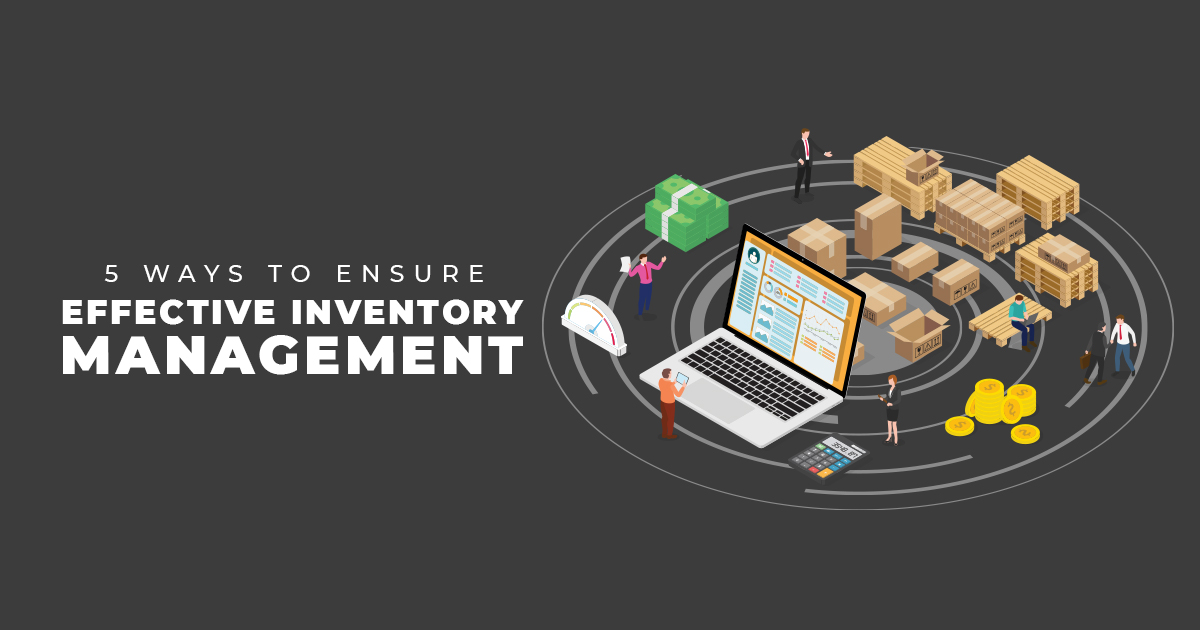
Inventory management generally requires keeping track of stocked items. However, managing inventory also requires that the right products are in the right place at the right time. More importantly, they should be at the right price. Businesses better manage inventory using an online inventory management system. An inventory management system helps you quickly respond to market demands while ensuring that you have enough stock at hand. Here are five ways to ensure effective inventory management.
Ensure Effective Inventory Management in 5 Ways
If you are strategic in managing inventory, you can improve the efficiency of your entire organization. However, businesses still see effective inventory management as a constant challenge. As such, we encourage you to consider implementing one or more of these five effective inventory management strategies. With these, you can improve your organization’s efficiency, productivity, and revenue.
ONE: Adopt Software and Technology
For businesses, it’s all about technology these days. At the start, your small business may manage inventory using spreadsheets. However, as your business grows, you will discover a need for using inventory management software to order, manage, and track products and goods more efficiently.
You can employ other technologies to go with your inventory management software, too! A barcode scanning system will allow you to process incoming inventory and data from cash registers and POS systems. Meanwhile, an advanced radiofrequency system helps automate warehouse control from start to finish. As such, they are popular with businesses that handle thousands of orders every day.
TWO: Automate Inventory Management System
So, you are running a small business. You do not have to rely on manual inventory management to monitor the movement of your stock. Furthermore, manual inventory counting could lead to inaccuracies, resulting in customer dissatisfaction and a loss in sales. Thus, as much as possible, we need to remove human error from the equation to ensure smooth business operations. Aside from that, manual inventory counting requires a lot of time and effort, thereby reducing staff productivity.
As such, it is best to implement an online inventory system to take care of this time-consuming task. More importantly, an online inventory system does it with far greater accuracy and efficiency. If you automate your inventory management system, you can better track inventory levels. The system will use all relevant purchasing and sales order data to create reports, which you can access in real-time! Therefore, if a customer calls and asks if a product is in stock, you can respond quickly with a quick check on your online inventory system.
THREE: Employ Predictive Data Analytics
If you have access to real-time inventory data and analytics, you can generate accurate product and sales forecasts in real-time. You can then use this data to forecast market demand. Doing so will help you scale your inventory at the right time. As a result, you get higher profits.
Aside from that, predictive data analytics also helps boost cash flow by reducing inventory costs. Data analytics also provides more accurate product availability to customers, which then helps improve customer satisfaction. Moreover, data analytics estimates the right inventory quantities to meet market demand. Lastly, data analytics helps increase profit margins by limiting the scrapping of old inventory. Thus, you can better market your products to the right customers through accurate sales forecasts.
FOUR: Generate Forecasts Accurately
It would be best if you created accurate forecasts to produce reliable demand plans for your business. With the help of forecasts, you can run marketing campaigns to help increase product demand. You can also better plan for seasonal events to positively impact demand. Also, you can determine which products will sell the fastest or which product will sell the most. With accurate forecasting, you can significantly impact your profits.
You can forecast inventory in two ways: quantitative forecasting and qualitative forecasting. The first type of forecasting predicts future demand according to past sales data. As such, the more data you gather, the more precise the forecast. Meanwhile, the second type of forecasting relies on the knowledge of experienced experts. These experts predict demand according to less measurable indicators, including potential demand and market forces.
FIVE: Integrate Mobile Technology
You can also integrate cloud-based mobile technology to provide your staff with convenient access to your inventory system. Doing so will significantly improve staff efficiency and productivity. For instance, your salespeople can use mobile apps to access real-time inventory data and keep track of shipment information. Mobile technology can also help warehouse workers monitor inventory. These mobile apps can assist in managing assets, monitoring shipments, and overall operations.
So, it would be best to find an online inventory management system that provides mobile app access options. With an online inventory system, you can avoid order management problems, improve work efficiency, and increase customer satisfaction.
Ensure Effective Inventory Management Now!
Use these five easy strategies to ensure effective inventory management for your business. Then, to help improve inventory management, employ an online inventory management system to achieve the best results.
Got any other tips to improve inventory management? Please feel free to leave them in the comments section below!
